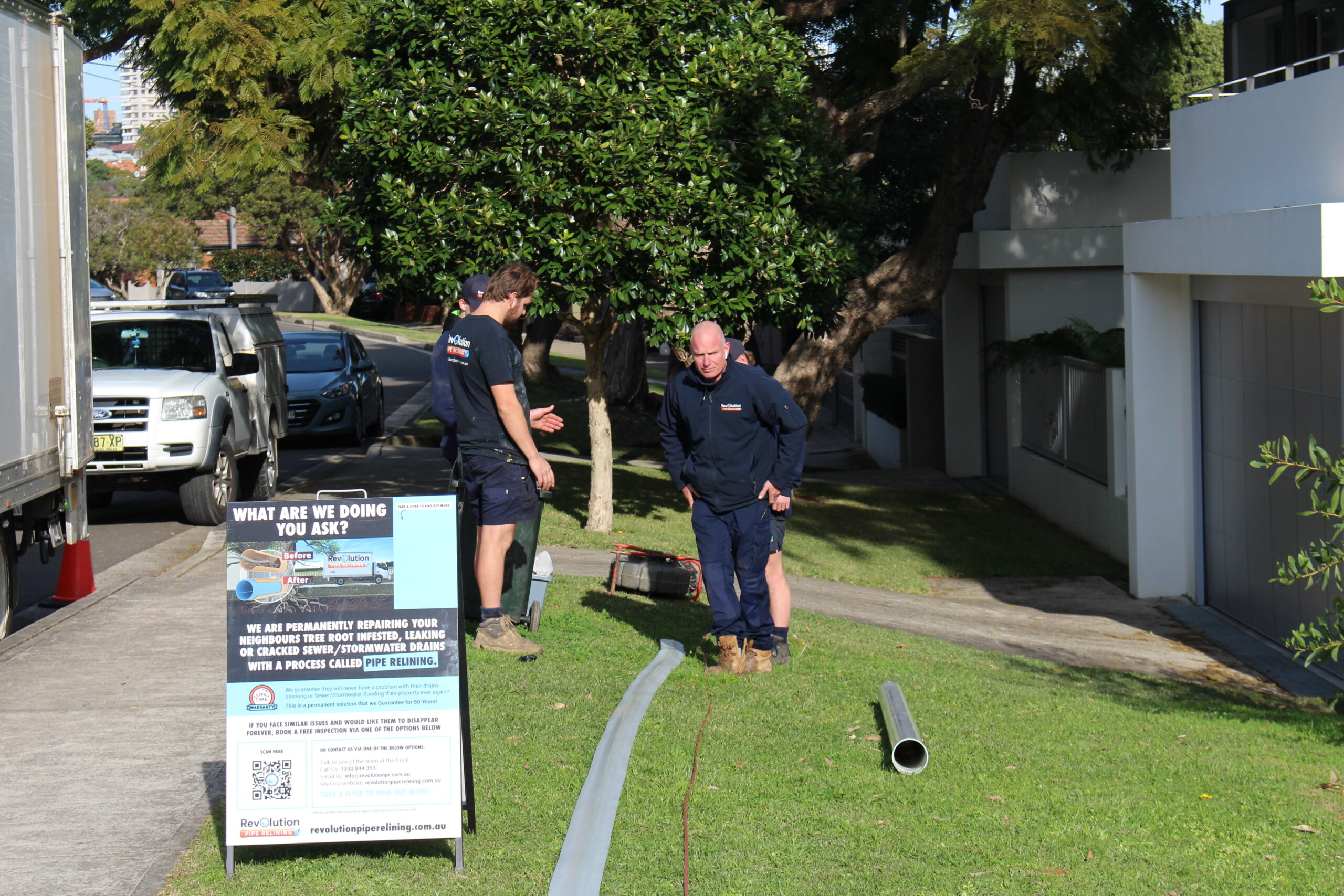
13 May Comparing Costs: Trenchless Pipe Relining versus Traditional Pipe Replacement
Are you confronted with the need to repair your pipes, but are concerned about the disruption that traditional pipe repair methods entail? Many homeowners and property managers in Northern Beaches are currently evaluating the merits of trenchless pipe relining as opposed to traditional pipe replacement.
This article provides a thorough cost analysis of both methods. As you read on, you’ll uncover insights that can guide you to a more cost-effective and minimally invasive solution tailored to your specific circumstances. Let’s delve into the advantages, drawbacks, and economic consequences of each option, helping you make an informed decision that aligns with your needs and financial plan.
Trenchless Pipe Relining vs Pipe Replacement: A Comparative Study
Understanding the Processes
Trenchless pipe relining in Northern Beaches is an innovative method that repairs existing pipes by constructing a new pipe within them. This technique utilises cutting-edge technology and hard-wearing materials, making it preferred by those seeking to avoid the upheaval of excavating their property. The procedure involves the insertion of a liner soaked in resin into the current pipe, which then solidifies to form a new, integral pipe. This not only mitigates disruption but also augments the lifespan of your pipe system.
Conversely, traditional pipe replacement necessitates the complete extraction of old pipes and the installation of new ones. This method is typically more time-intensive and demands considerable digging, which can disrupt your landscape. While reliable, the restoration following this process can be expensive and inconvenient.
Evaluating the Costs of Trenchless Pipe Relining
Trenchless pipe relining in Northern Beaches embodies a forward-thinking solution for pipe repair without the complexities of conventional methods. This technique requires inserting a liner impregnated with resin into the compromised pipe, which then hardens to forge a new pipe internally, repairing the pipe with minimal fuss. Materials like durable cured-in-place pipe (CIPP) or fiberglass liners, coupled with robust epoxy resin, are selected for their durability and resistance to corrosion and root infiltration. Moreover, this method capitalises on state-of-the-art machinery, including CCTV for inspections, insertion apparatus, and curing systems employing UV light or steam, which expedite the repair process, enhancing efficiency and saving time.
Additionally, trenchless pipe relining is cost-effective concerning labour since lesser excavation is needed, allowing for a smaller team to complete the task swiftly, in contrast to the labour-intensive traditional pipe replacement. The rapid completion time—typically a few days—permits property owners minimal interruption and a quick return to normal activities. Also, since digging is minimal, there is no need for expensive reconstruction of landscaping or structural features, making this process economically sound and offering a durable solution that curtails both immediate and future maintenance costs.
Assessing the Costs of Traditional Pipe Replacement
Traditional pipe replacement, a straightforward method of removing old pipes to install new ones, often incurs higher costs due to the extensive manual labour for excavation and installation. Though the materials, such as PVC or metal pipes, may seem less expensive individually, the cumulative cost of materials and labour can escalate. This technique is characterised by its manual-labour intensity and slow progress, resulting in increased costs for manpower.
Additionally, there are indirect expenses associated with traditional replacement, like road closures and permits if the work area is public, and these add to the complexity and cost. Post-installation, restoring the landscape can be particularly costly if large areas have been affected or specialised structures like driveways or patios need rebuilding. Project duration also impacts costs; longer projects may lead to indirect costs such as inconvenience to homeowners or lost business for commercial properties, which may be substantial.
Comparative Analysis of Costs
When scrutinising the costs, both immediate and long-term financial impacts must be considered. Trenchless pipe relining might initially appear more expensive, yet it offers maintenance savings and does not require frequent replacements. Traditional replacement might be cheaper upfront, but additional costs of property restoration and longer project times should be taken into account.
Real-world cases reveal that trenchless pipe relining can cut total costs by as much as 30% when compared to traditional methods. A study on a residential complex demonstrated notable savings, with minimal interference to residents and their environment.
Top-Quality Trenchless Pipe Relining Services by Revolution Pipe Relining
While both trenchless pipe relining and traditional pipe replacement have their advantages, trenchless technology often has the upper hand in cost-effectiveness and convenience. It’s less invasive, faster, and generally more economical in the long run because of its durability and infrequent need for repairs.
If you’re contemplating pipe rehabilitation and prefer a method that minimises disruption and long-term expenses, trenchless pipe relining is worth considering. Revolution Pipe Relining offers expert trenchless pipe relining services in Northern Beaches. Our skilled team is prepared to deliver superior service and advice. For more information or a free quote, contact us at 1300 844 353. Don’t delay; ensure your pipes are in capable hands with Revolution Pipe Relining.

No Comments